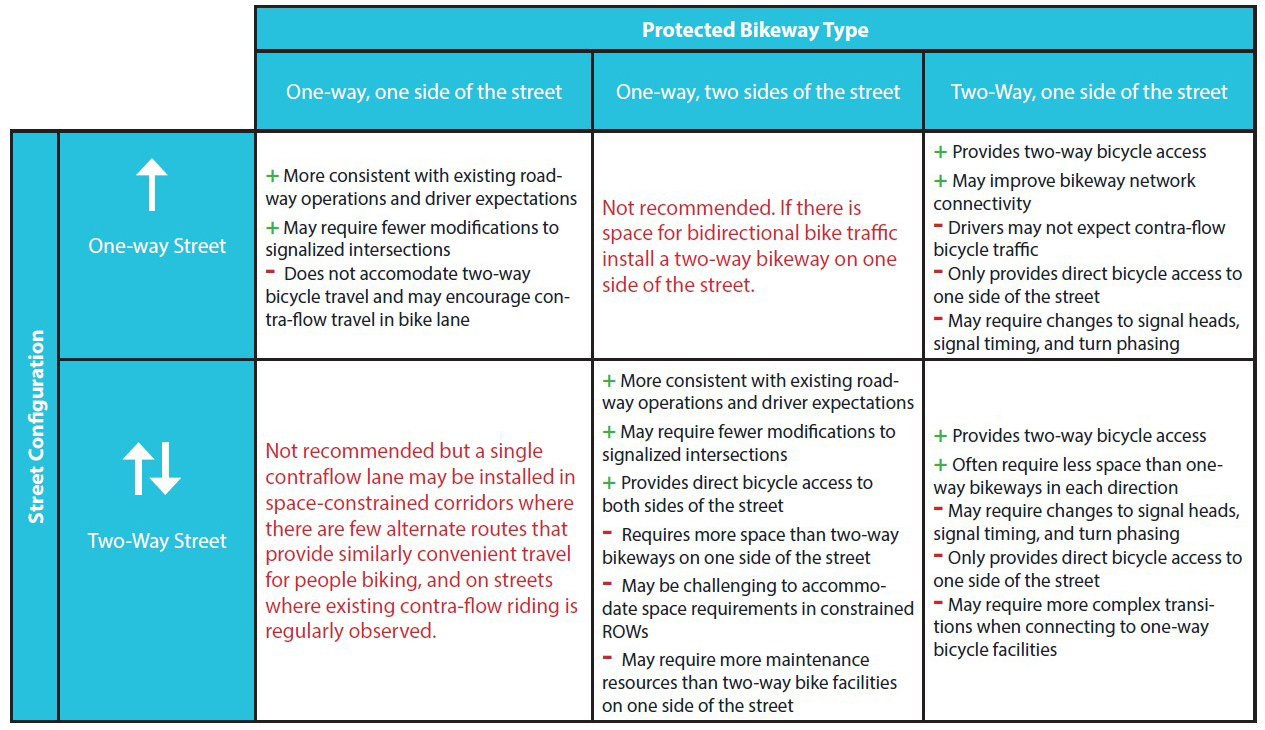3.4B Protected bike lanes introduction
Search Content
Download PDF
Print Guide
Introduction
Protected bike lanes are exclusive facilities for biking and micromobility that incorporate physical, vertical separation from motorized traffic, parking lanes, and adjacent walking facilities. The methods used to provide physical separation vary and include plastic flexible delineators or “bollards,” rail-mounted bollards, planters, in-street concrete curbs, and curb-protected sidewalk-level bike facilities. Parked cars can sometimes buffer protected bike lanes from motorized traffic but should be implemented along with other vertical delineation to eliminate encroachment into the bikeway. Protected bike lanes may operate as one or two-way facilities and may be designed to operate on one or both sides of a roadway.
By incorporating physical separation from motorized traffic and adjacent facilities, protected bike lanes provide enhanced safety and comfort for people of all ages and biking abilities. Protected bike lanes are All Ages and Abilities bikeways, and are the preferred treatment for any street reconstruction project on the AAA network where a trail, shared use path, or neighborhood greenway is unfeasible or not preferred.
One-Way and Two-Way Protected Bike Lanes
Protected bike lanes may be designed for one-way or two-way operation. One-way protected bike lanes are typically preferred on streets with two-way traffic as they usually present fewer modal conflict points, require fewer intersection treatments, and better integrate with existing roadway operations. Contextual design factors may favor two-way operations in some contexts, for example, streets with few points where there would be left turns across the bikeway or streets where one-way protected bikeways are not feasible because of constrained right of way. Two-way bikeways have fewer conflicts on streets with one-way vehicle traffic. Please consider the criteria in Figure 3.4B.1 when deciding between one and two-way protected bikeways.




